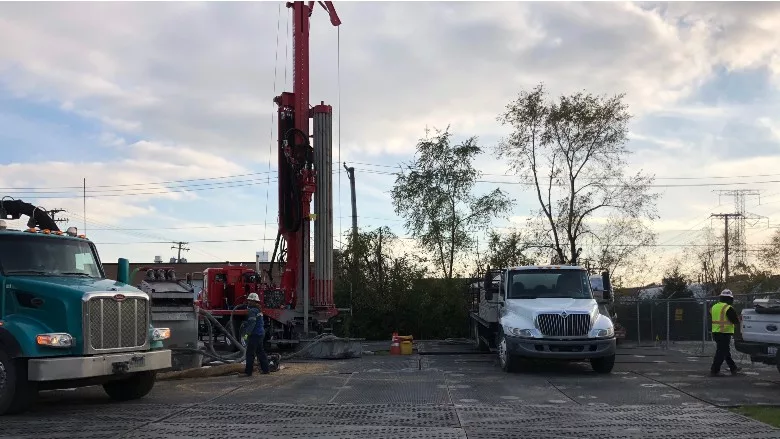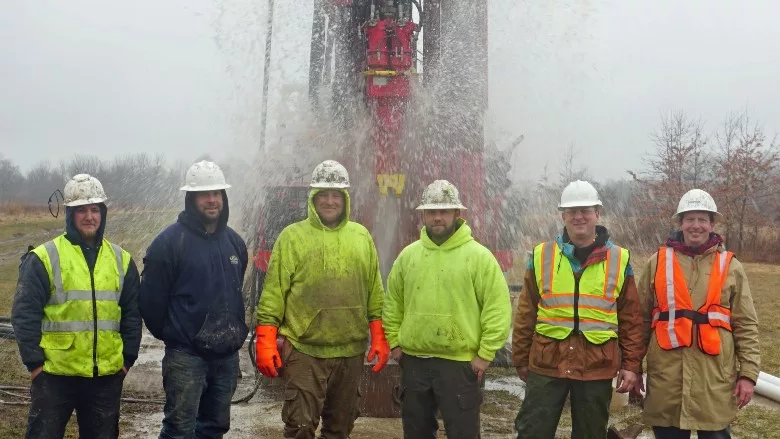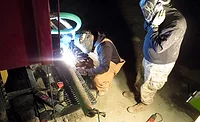Know the Dynamics, Responsibilities of Specialty Drilling Projects
Higher-Level Drill Bids Require Collaboration, Due Diligence

Many specialty drilling projects have requirements beyond just showing up and installing product or extracting resources — like zero cuttings or fluids discharge. Make sure you understand, and build into your bid, all of these items.
Source: Brock Yordy

Collaboration can lead for better results whether you do a large-diameter water wells or other types of specialty drilling.
Source: Brock Yordy

Asking due diligence questions up front can help you understand — even exceed — a client’s site restoration expectations.
Source: Brock Yordy
The traditional dynamics of a drilling project started with a driller and customer discussing the demands for a home, farm or business, followed by an estimate and a handshake. Those handshakes forged the modern drilling industry. Over time, specialty well designs became more specific, requiring third-party design and specifications — ultimately progressing beyond handshakes to a signed contract and a percentage of funds before mobilization.
For nearly a century, the scope of these specialty projects limited access to companies representing less than 10% of the industry. However, advances in capabilities of rigs in the 50,000- to 100,000-pounds pullback range have opened opportunities for more drilling companies to win bids. Now that you have a rig capable of doing the work, is your company ready to execute?
Starting at the Top
In my father’s shop, a sign above his desk read, “Well drilling is the only job that starts from the top.” Like many drillers of his generation, he built the company’s reputation on a handshake. Today the dynamics have changed, and due diligence for a bid must start before winning the bid. I like to think back to that sign above the Yordy & Son desk and ask:
- What will this job look like one month after completion?
- How many cubic yards of fluid and cuttings will require off-site disposal?
- What are the elevation and pad construction requirements?
- Who is responsible for the final site restoration and for how long?
I consider these last closeout items just as critical as the design of the well, yet do not always see them openly discussed or clearly defined. Bids often miss one prominent aspect of a project: the time required to wrap up after the primary equipment leaves the jobsite.
Lesson Learned: As if the Rig were Never There
A few years ago, I managed a specialty project for cathodic protection wells in the west Chicago suburbs. We received a request for a bid after the original drilling company was removed for poor site management. Before bidding, I walked the site with the pipeline owner, cathodic engineers and city representatives to discuss expectations and the timeline for completion. I learned that, beyond the standard steps from start to finish, all parties involved wanted zero discharge of fluids or cuttings on-site. They wanted it to look like a rig were never there drilling two 400-foot holes 6 feet apart. The final caveat was the customer and engineer expected the project to cost the same as the original bidder. I explained to the customer and design team that we would not bid on the project in hopes we could do better. Finally, I submitted my bid with the project professionally matted, around-the-clock vacuum truck service, and secondary containment measures utilizing diapers. Although our price was 60% higher than everyone else bidding, we won the bid. We took on full accountability for site preparation and restoration. Those two holes won us the rest of the Chicago suburbs’ work, where we continued to finish projects with the least amount of disturbance possible.
Dynamics of Working with Others
A drilling company’s credentials start with its professional experience/licenses and are further substantiated by an investment of millions of dollars in equipment required to complete the project.
I have worked on specialty irrigation projects for cannabis facilities in the Midwest over the past few years. These projects present an interesting collaborative dynamic. I’ve seen them launch under the primary influence of West Coast engineers designing all aspects of the facility, including the well. I have experienced other, more positive situations where the driller, owner and engineer work together to design the best well for the area. I have also worked with designers who pull specifications from irrigation wells intended for the Pacific Northwest. These situations require the drilling company to work with the customer and engineer to create an executable plan. The customer deserves the most productive well throughout its lifecycle. A drilling company’s credentials start with its professional experience/licenses and are further substantiated by an investment of millions of dollars in equipment required to complete the project. It’s up to the drilling company to turn that experience and investment into a plan for the best well, then help other parties understand what that looks like.
Lesson Learned: We’d Need to Work Together
In early March, I got a call from a drilling company. This competent company had drilled hundreds of large-diameter water wells, and needed help on one. They had two weeks into a well that should have finished in three days.
The engineering firm had written specifications for drilling fluids that utilized low concentrations of high-yield bentonite and high concentrations of long-chain clay-inhibitive polymers. At the drilling company, they considered the specs a little unusual, but believed they could succeed with suitable pumps adding enough uphole velocity. Mother Nature decided not to cooperate by introducing an unconsolidated sand and gravel zone that easily destabilized when drilled with that fluid.
We started the collaboration with a conference call requesting a change to the drilling fluid specifications and outlining an alternative fluids plan. We learned on the call that the fluid specifications came from a standard design that utilized a reverse circulation rig. The engineer explained that the method created highly productive wells with minor issues in development. With the new information revealed in the call, the company presented its direct mud rotary approach and the justification for a drilling fluid with higher concentrations of bentonite and PAC polymers instead of the RC fluid.
Responsibilities
The drilling company must take ownership of all project specifications. We are responsible for effectively bidding on a job and thoroughly explaining our process and capabilities. I believe three huge mistakes made on specialty projects impact the bottom line and, ultimately, a company’s credibility.
- Not accounting for enough time to execute safely and efficiently.
- Thinking, I shouldn’t speak up during a bid process. Drilling company input can actually save project designers — and customers — grief and lead to better results.
- Believing that well design has every plan required to complete the project.
Discovering the unknown is tough enough without piling on these three mistakes. However, if you start from the top, bid sensibly and take ownership of project specs, all parties involved can successfully discover the unknown together.
Looking for a reprint of this article?
From high-res PDFs to custom plaques, order your copy today!





